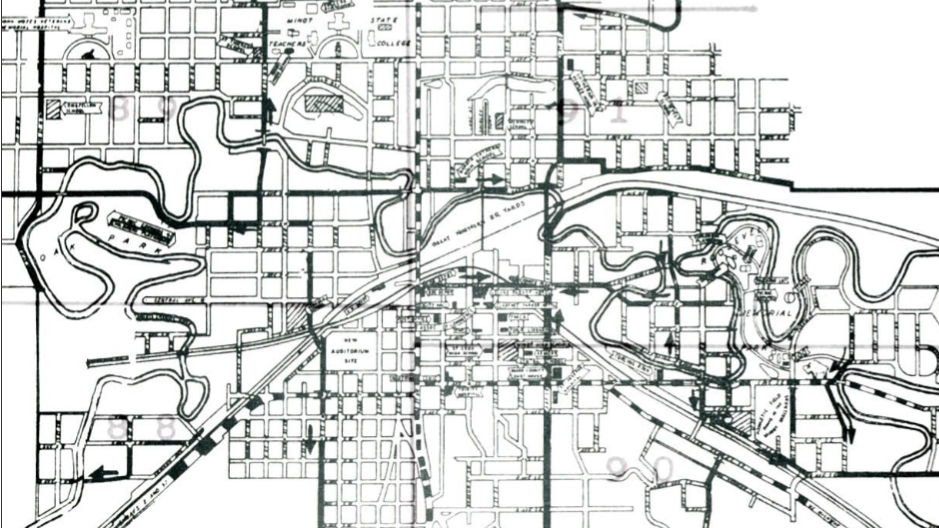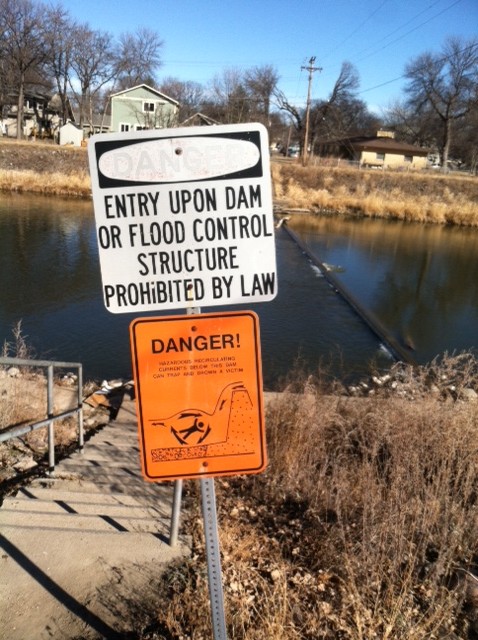Minot hasn’t always had ‘dead-loops’. We used to be able to boat or canoe all the way through town. We used to have access points. These facts invite the questions of how did we get here and what do we do about it?

The Past
If you look closely, you’ll see the course of Minot’s Souris River today is vastly different than it was in the past. An extensive channelization project in the 1970’s altered the course of the river, closed sections from the new channel, and added the cofferdams.

The Present
In Minot, we’re proof a place — although hard to see — is always moving somewhere. When that journey is decades long and you’re not aware you’re making it, the place you wake up to may be vastly different than the one you left. This is Minot’s current state with regards to the river — one of waking. Here’s what we’re discovering:
- Dead Loops. When we cut-off river channels, kill current, and dump street sediment in a river, we start calling those sections ‘dead’.
- Danger. When you force water to cascade it creates dangerous, recirculating currents.
- Laws. When dangerous currents kill people, cities make laws to protect themselves.
- Fait Accompli. When these changes are so big and take so long, we begin to think we there’s nothing we can do about them.
The Future
Where we end up will be different than where we set out for, but by acknowledging past mistakes and stepping forward toward the future we want, we know our current river-circumstances will improve. Here’s the idea we’re pursuing. Yes, it’s big. Yes, it’s expensive. And yes, by telling you about it, we think we’re taking some of the first steps toward achieving it.
